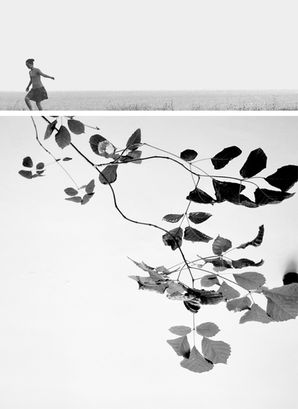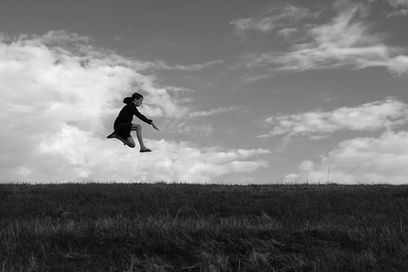
SENSE OF ROMANCE
March 15, 2020
INTERVIEW
PHOTOGRAPHY Michael Duckworth
INTERVIEW Melanie Meggs
Michael Duckworth has always had a passion for photography, firmly rooted in his childhood spent exploring the wild landscapes of the Lake District where he grew up. It was this experience of awe and wonder of nature that would drive him to pursue art, photography and film at Manchester. Yet it was his subsequent move to London that would truly shape Michael’s vision, as he soon found himself spending every spare moment with friends, working as a Director of Photography on short films, music videos and a multitude of other passion projects.
It is clear that Michael’s work is inspired by his background in art and cinematography, each image evoking a sense of romance, but also the solitude and darkness of the city. His motivation is to create a cinematic atmosphere, allowing each viewer to immerse themselves in the captivating visuals and gain a glimpse into his world – one that is filled with mysterious stories, subtle emotions and vivid details. Michael's photographs are not simply snapshots; they are windows into a larger narrative, inviting us to explore and discover its many layers. Through his pictures, Michael wants to make us feel something, provoke us to think, and connect with the beauty of the city.
So, join us as we delve deeper into the creative mind of Michael, an artist whose goal is to bring forth the beauty of the world and to evoke a sense of emotion within the viewer. Let’s discover how his style has evolved over the years, how his work reflects his experience of life in London and what we can learn from his powerful imagery.

“I started photography at school, we were lucky enough to have a dark room, so I would wander around the Lake District countryside with a roll of black and white film. With only 24 exposures, shooting anything I found interesting, the results were often terrible, but I was definitely hooked and slowly got better.”
IN CONVERSATION WITH MICHAEL DUCKWORTH
THE PICTORIAL LIST: Michael, where do you find your inspiration for your photography?
MICHAEL DUCKWORTH: My inspiration doesn’t always come from other photographers and their work but often movies (especially noir), paintings and the music that I listen to as I wander around the city. Also more recently at a Manga exhibition I was especially inspired by the clean graphic style and powerful compositions.
TPL: Has your style of photographing changed since you first started getting serious about your street photography?
MD: My style is always being pulled in opposing directions I loved the clean graphic style of photographers like Jason M. Peterson around the time I first started sharing photos on Instagram. But now I become more excited by texture and tonality, and seeking a more abstract interpretation of a scene, but ultimately, I feel I’m still looking for my style as it always evolving.
TPL: Where is your favourite place(s) to photograph?
MD: Favourite places in London oddly are either the seedy alleys, old railway bridges and fading buildings or famous landmarks where I enjoy the challenge to find a unique view on an over photographed location, but I often start out trying to get lost in a city that I’ve become very familiar with, seeking out a hidden London.
TPL: Do you think equipment is important in achieving your vision in your photography? What would you say to someone just starting out?
MD: I don’t feel equipment is important in photography, when I first move to London I was working as a Cinematographer on music videos and short films, I was an often slow and meticulous process with complex camera set ups. It was a huge revelation when I realised that I could shoot and edit on my iPhone, the ability to work so quickly and freely meant my photography improved more quickly than the days of shooting on film.
If you’re starting out shooting on a phone often means you need to be more creative, its compact and inconspicuous so it lends itself to more intimate photography.
The photographer's most important piece of equipment is a good pair of shoes.

TPL: What characteristics do you think you need to become a good photographer? What’s your tips or advice for someone in your genre?
MD: I think one of the main characteristics you need to be a good photographer is take the time to find what’s interesting around you, for example street photography isn’t about rushing from location to location. Don’t be afraid to keep visiting the same location, it will change constantly at different times of the day, seasons or weather, it can also be a great challenge to find a new take on a familiar scene.
Visit a location enough and you’ll be able to visualise the scene before it happens, you’ll know how the shadow move across it and feel the rhythm of the city, predicting how your subject moves throughout the frame.
TPL: Do you have any favourite artists or photographers you would like to share with us, and the reason for their significance?
MD: I’ve been very inspired by the work of Fan Ho, Trent Parke, also cinematographers such as Conrad Hall, Darius Khondji and Roger Deakins. I’ve also be inspired by the artist J.M.W. Turner, I love the way his early work shows such masterful use of light, but also how his work became much more abstract and impressionist. This is something I aspire to do with my own work in time.
TPL: "If I wasn’t photographing what would I be doing?...
MD: I’d love to be involved in design, it was something I studied at university and it’s always been a useful set of skills, just like photography it helps you to see the world in a different way."































